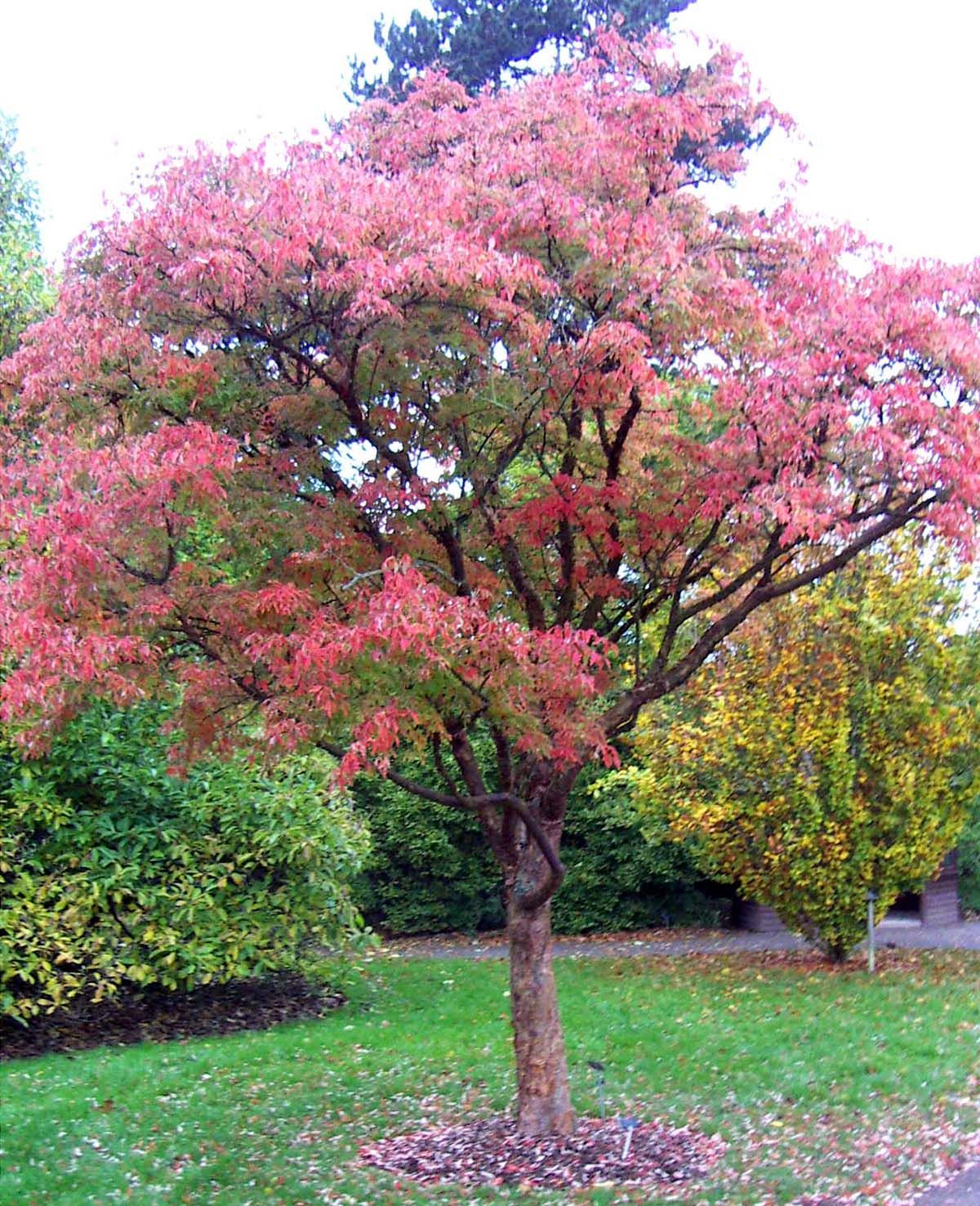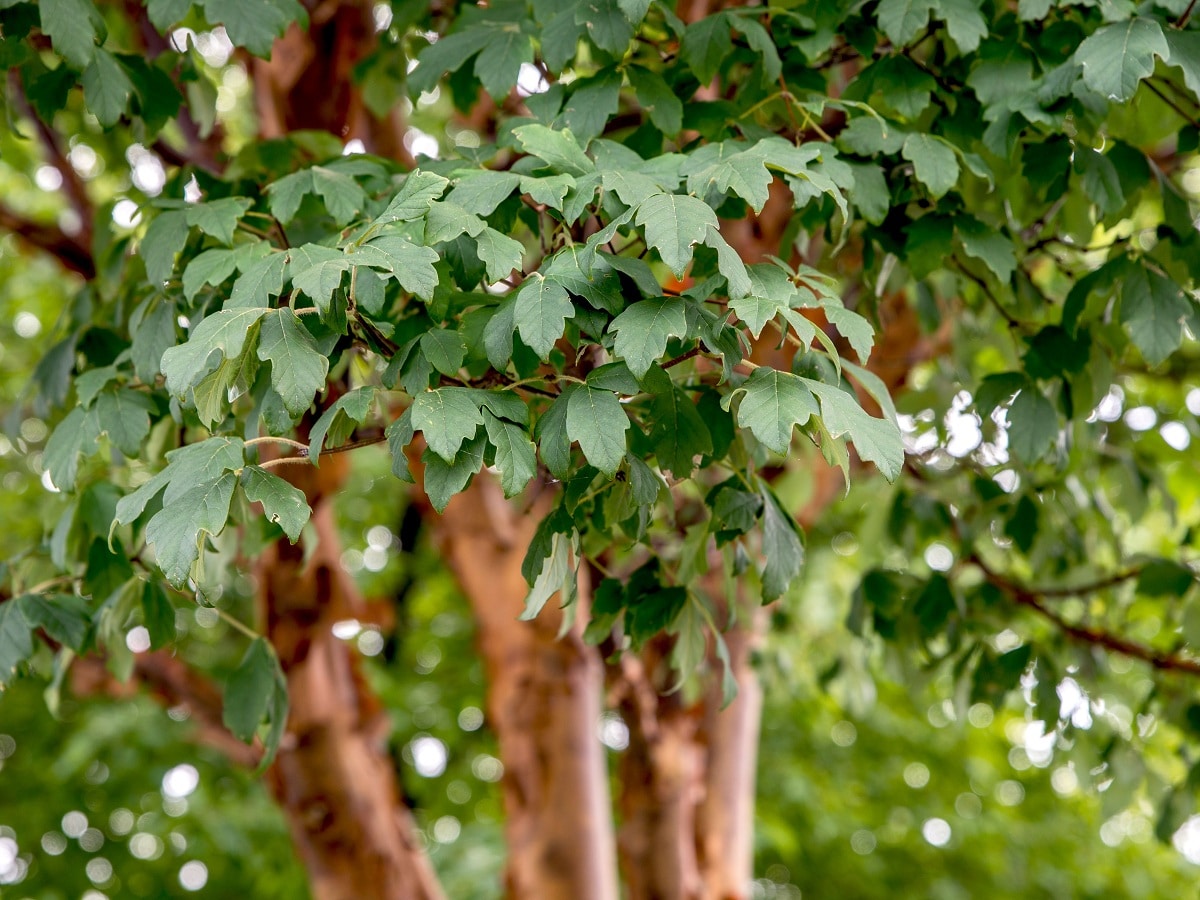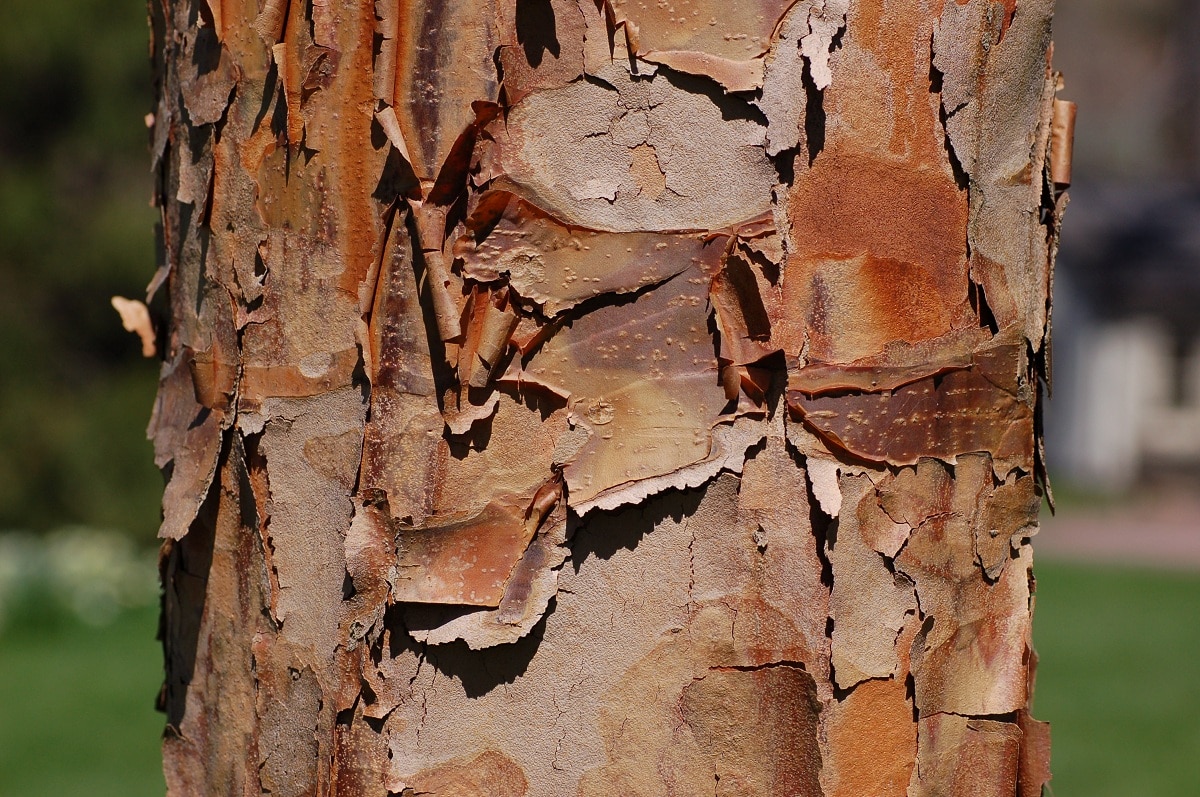
Today we are going to talk about a type of ornamental tree that has flowers native to the central region of China. Its about Acer griseum. It is known by the names of paper maple, gray Chinese maple, bark maple, among others. Its use as an ornamental tree has spread to various areas of the planet that have temperate climates. It has an exfoliated reddish-brown bark that makes it especially attractive during the fall and winter months.
In this article we are going to tell you all the characteristics, uses and cultivation of the Acer griseum.
Key features

It is a tree that comes from China and is used as an ornamental tree due to its beauty and contrast. It is a small to medium-sized tree since does not usually exceed 18 meters in height. The bark is shedding in thin, very thin layers that resemble paper. Hence its common name. It has compound leaves that can measure between 5-20 centimeters long. They are leaves that have a dark green color on the underside. It is one of the tree species that takes the longest to change the color of the leaves in autumn. It is at that time that it acquires a foliage with a reddish orange color.
Its flowers are not the main attraction of these trees since it is the contrast of colors that favors their ornamental use. These flowers appear during the spring time and have a greenish yellow color. They grow in clusters and are very small in size. The fruit of this tree is made up of two winged samaras with a pair of seeds inside. The way they spread and expand their territory is through the wind.
It grows and develops much better in places with a temperate climate. If we must have it in our garden for ornamental use, we must bear in mind that placing it in full sun may be the best idea.
Caring for the Acer griseum

The location in the sun is the most convenient in all those places with a temperate climate. It can thrive in a wide variety of soils with different pH's. The same goes for textures. The best substrates for Acer griseum are those humid that have good drainage. Let's not forget that drainage is the ability of the soil to filter irrigation or rain water and not allow it to accumulate. In the event that the water accumulates, poor drainage will end up affecting the roots of the tree.
It is a good potential option for all those areas with a clay soil. It is able to tolerate drought after the establishment period. However, the indicator to know that it is going through times of drought is the yellowing of the leaves. Its incorporation in a garden is recommended to ensure the presence of color throughout the four seasons of the year.
It is able to resist the cold very well since it can reach tolerate frost temperatures down to -25 degrees. It can be grown both alone and in small groups. The most suitable planting and planting season should be in autumn or spring. These two periods are imperative since in winter and summer they will not be able to survive.
Propagation of Acer griseum

The spread of Acer griseum it can be done by cuttings, grafts or seeds. The most recommended is the graft, since we will save time waiting for it to grow. Using seeds is the slowest and least pleasant option. If you want to do the grafting, it is suggested to use the sugar maple as a pattern to obtain better results. Because the germination rate of this tree is quite low it is considered that multiplication by stakes is your best option.
If you want to do it by sowing, it should be done in early winter and the seeds should be regularly stratified in sand. This germination can take time of 2-3 years knowing that only 5% of them are viable. These conditions make the graft much better.
Regarding the diseases and pests of the Acer griseum, can be attacked by numerous pests and diseases. Among them we find the marssonina, fusarium, bacterial canker, verticillosis and especially scale insects.
Uses
When you need to place ornamental trees, we cannot remain insensitive to the charm of this maple. And it is that it is a rather unique tree in which its bark and foliage stand out. Its bark is bright cinnamon brown and peeled into thin translucent layers reminiscent of paper. In a general aspect, reminds us of birches. In some young trees the bark exfoliates from the trunk and main branches. This makes the tree quite decorative and used for ornamentation. The flakes when detached reveal an orange trunk that is underneath.
All this mixture of colors makes it a tree widely used for decoration in streets, parks, both urban and private gardens. It is perfect for a small garden with a lawn and that don't have the visual competence of other trees. Many people come to plant it in patios or terraces that are very bright. We remember that it is a tree that needs a lot of sunlight and a temperate climate. It can be mixed with some materials such as a wooden deck, gravel or stone serum, etc.
The bark is used as an indicator of health. If it exfoliates, it means that there is some deficiency. The main thing in this circumstance is to enrich and lighten the soil. I also have to check that it has enough water. Those seeds that do not germinate is because they suffer from parthenocarpy. The fruit develops however the flower had been fertilized when it was not. Apparently it seems that the animals that consume these seeds prefer the virgin ones, so they neglect the others that can be developed without problems.
I hope that with this information you can learn more about the Acer griseum and their characteristics.